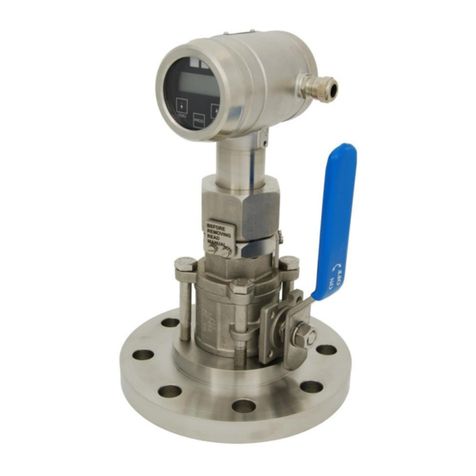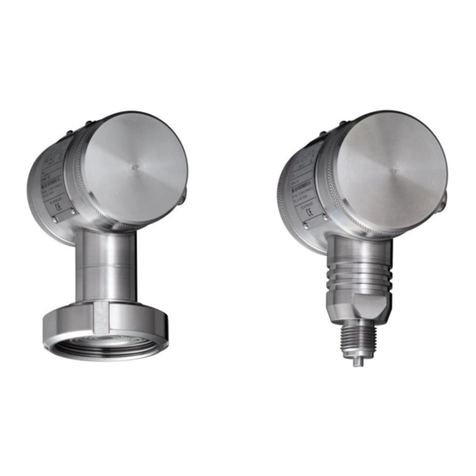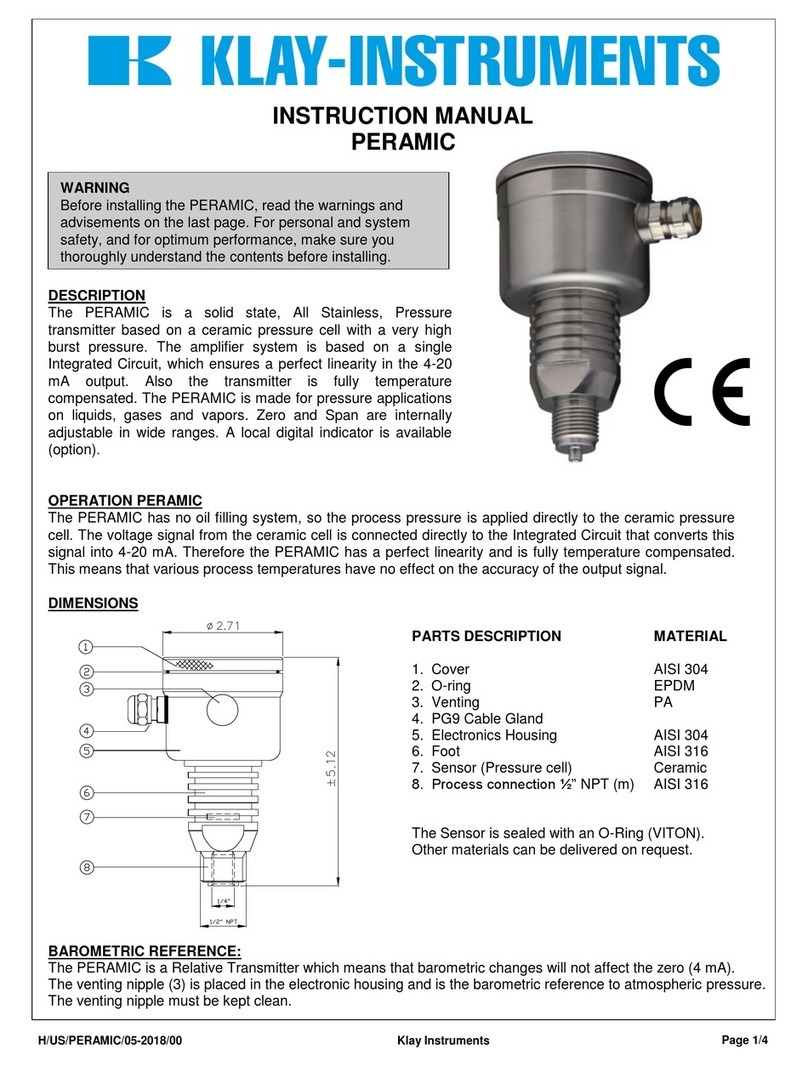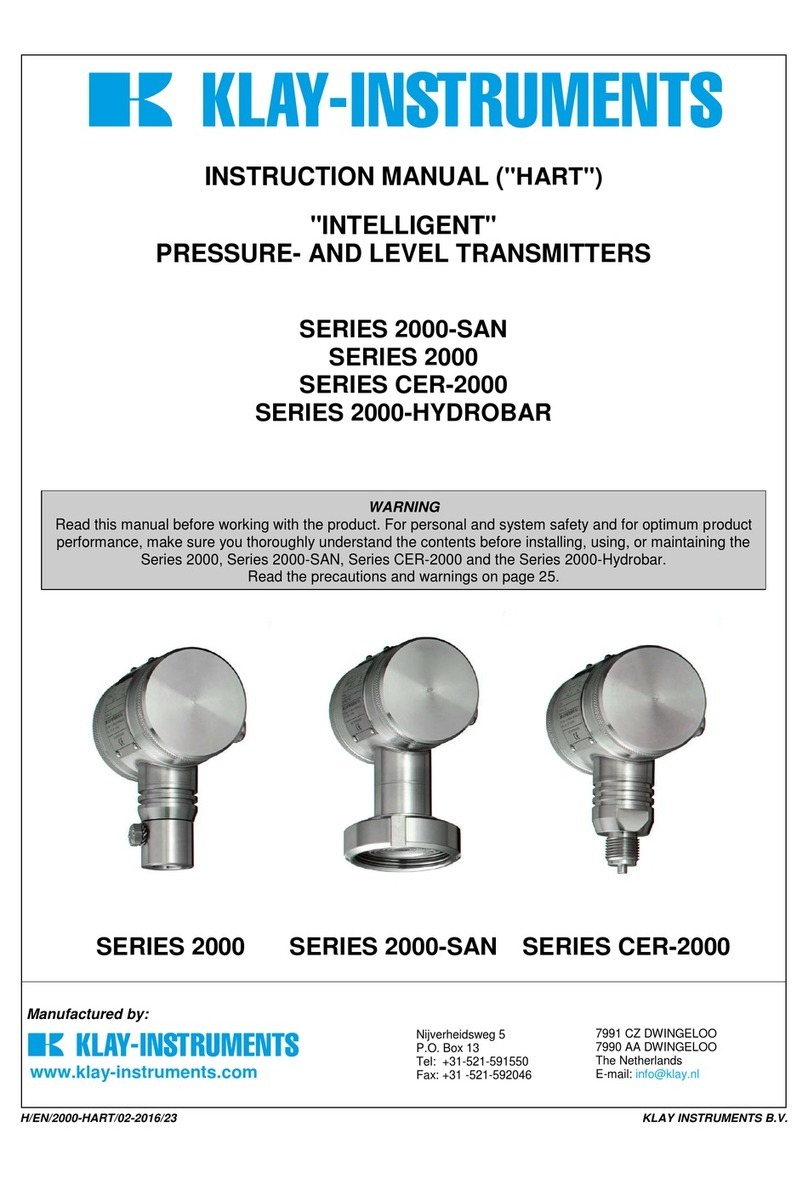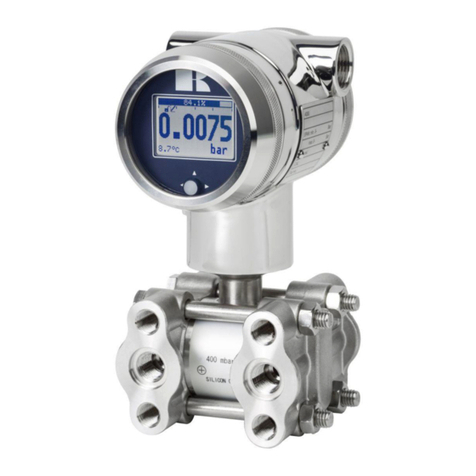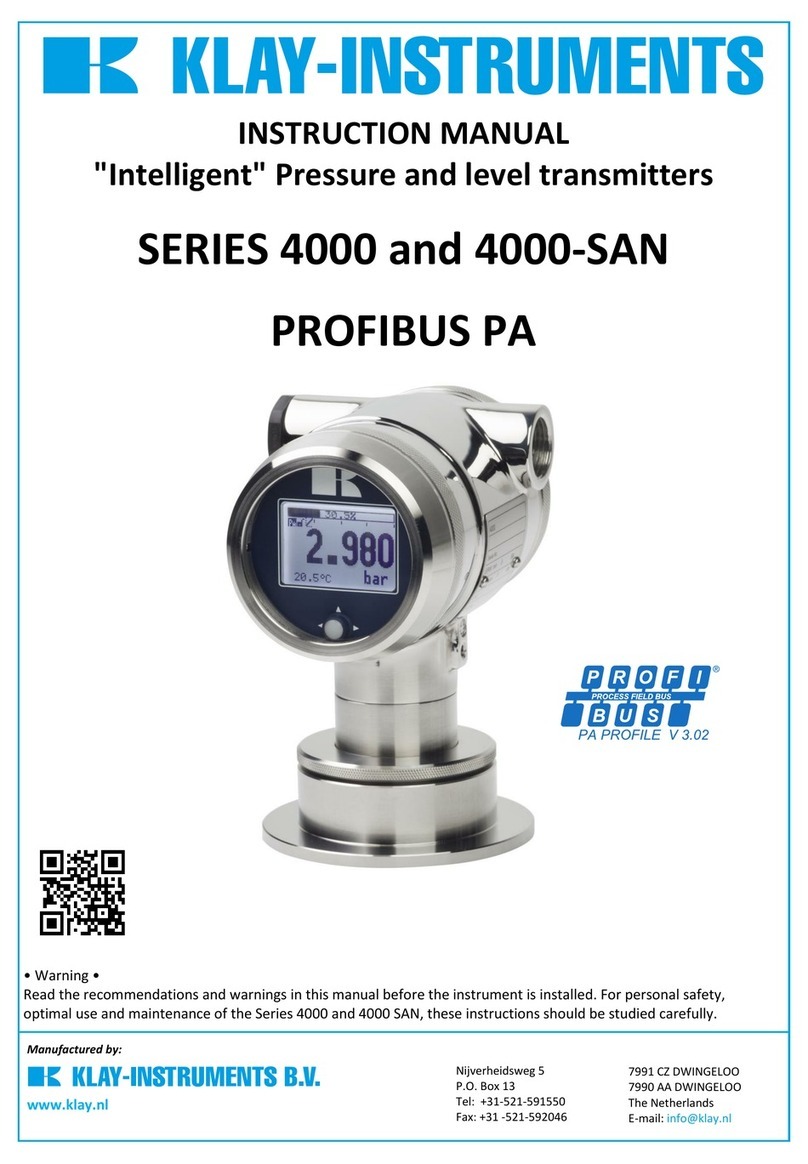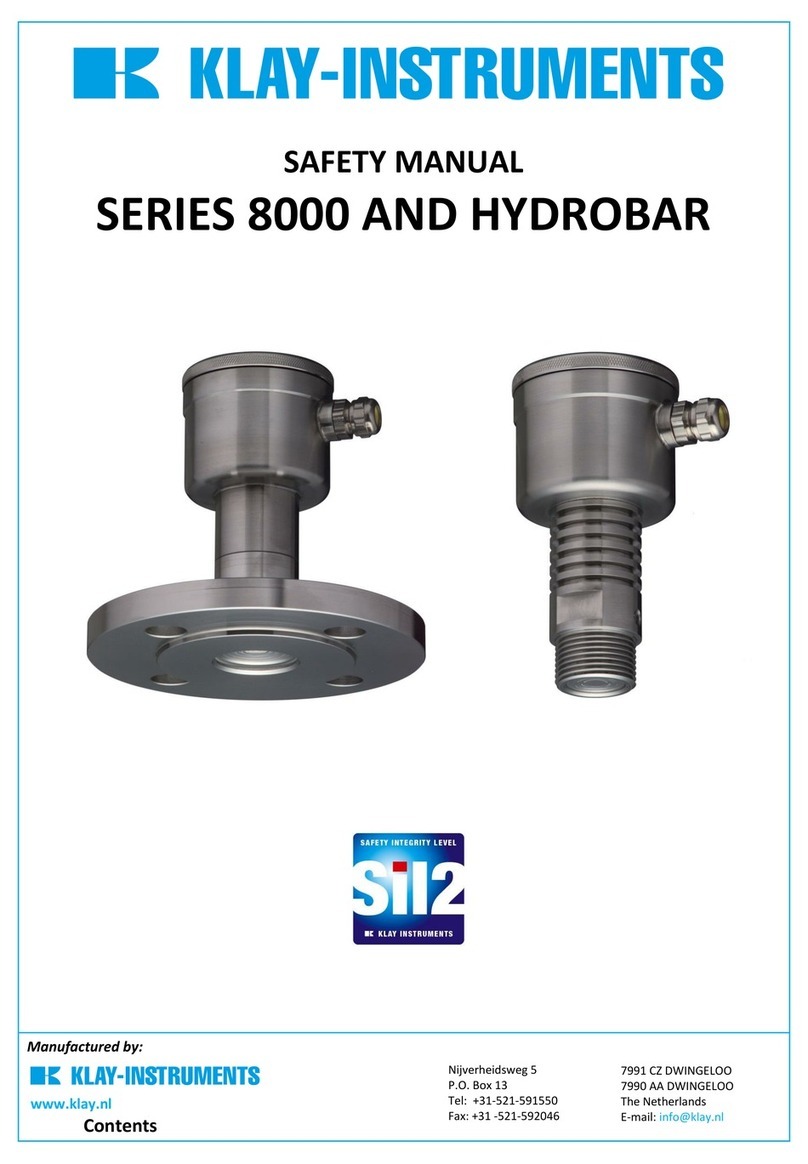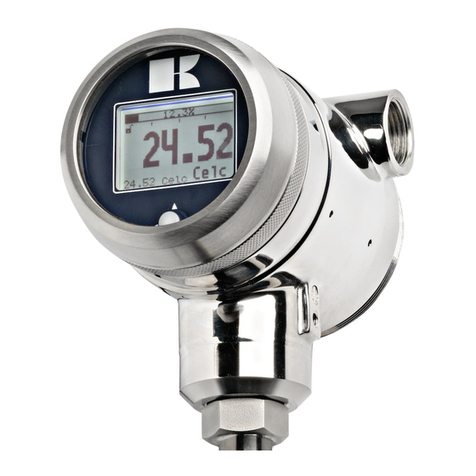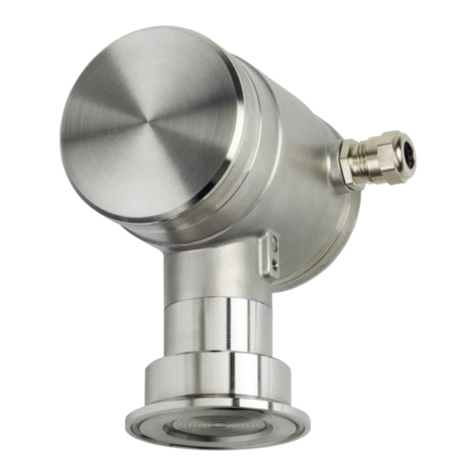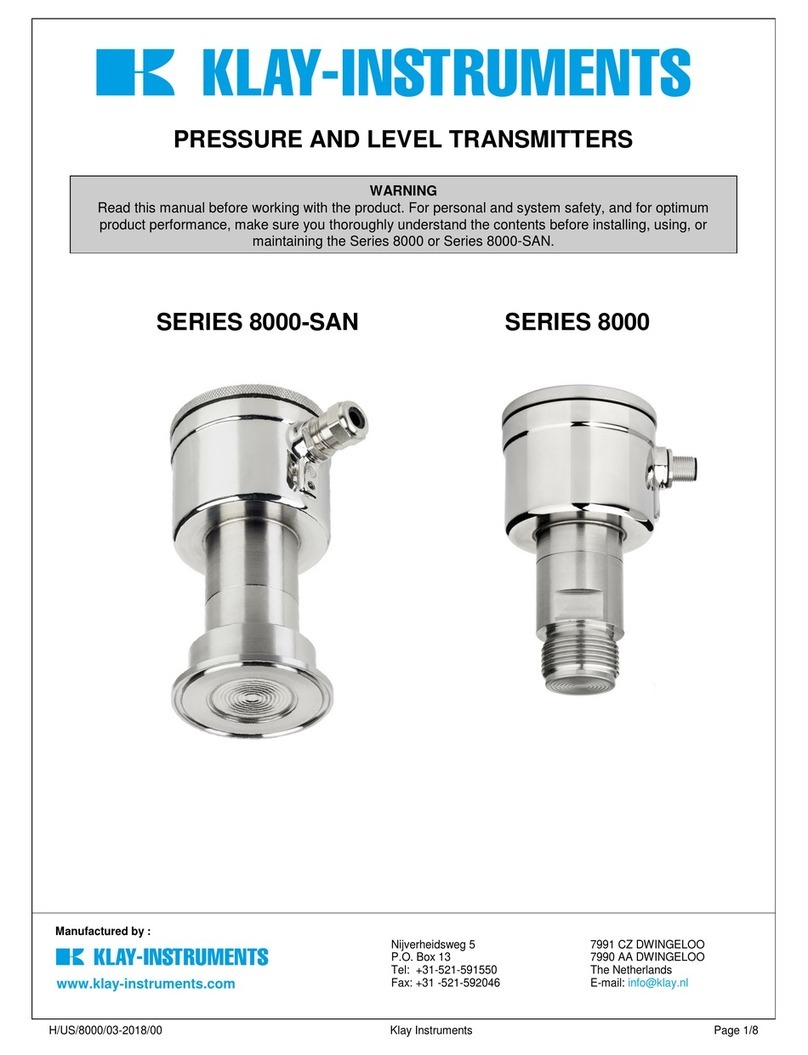3.3 MOUNTING POSITION
When the transmitter is mounted horizontally, the cable gland MUST be pointed downwards.
3.4 MOUNTING POSITION EFFECT
All transmitters are calibrated in vertical position.
If the transmitter is mounted in a different position, there will be a little zero shift.
If the transmitter is mounted up, there is a zero shift (e.g. 4,03 mA instead of 4mA). If the
transmitter is mounted down, there is a zero shift (e.g. 3.97 mA instead of 4 mA). After
installation of the transmitter the zero must be set to 4.00 mA with "P103" in the programming
mode.
This will not affect the span.
3.5 CALIBRATION
All transmitters are fully calibrated at the factory, to the conditions stipulated in user’s order.
When the buyer has not requested calibration, the transmitter will be calibrated at the highest
span. It is advisable to re-calibrate the transmitter after shipment.
3.6 WIRING
Under the cover (3) you will find the terminal board.
The push buttons "Zero", "Span" and "Prog" are under
the other cover (1). External loads must be placed in the
negative side of the 2-wire loop.
The figure left shows the wiring connection of the
transmitter. The 2-wires must be connected to 3 (-) and
4 (+) of the terminal board.
The screw terminal tightening torque range needs to be: minimum 1.0 Nm (8.85 in-lb); max. 1,2
Nm (10.62 in-lb).
Remove approx. 5 cm (2 in) of the cable mantle, strip approx. 1 cm (0.4 in) of insulation from
the ends of the individual wires. When using stranded cable apply the correct end sleeves for
the wires and make sure these are connected properly underneath the screw terminals.
The field wire conductor cross-section needs to be: minimum 0,2 mm2(24 AWG) and maximum
1,5 mm2(16 AWG). The transmitter must always be connected to earth.
The transmitter must be connected with standard two-
wire shielded cable. Do NOT run signal wiring in open
trays with power wiring, or near “heavy” electrical
equipment (E.g.: Frequency controller or heavy pumps).
Shielding must always be connected at the side of the
power supply. In case the process connection is already
connected to ground (e.g. via the tank or pipe line) Do
not connect the instrument to ground. Please ensure
that the instrument is not connected to ground
twice to prevent an 'earth loop'. In applications with
synthetic process connections, the enclosure (internal
or external) must be connected to ground.
The CER-2000 with a synthetic process connection must be connected to earth. Reversing the polarity will not
damage the transmitter, but the transmitter will not function until the + and –are properly connected.
